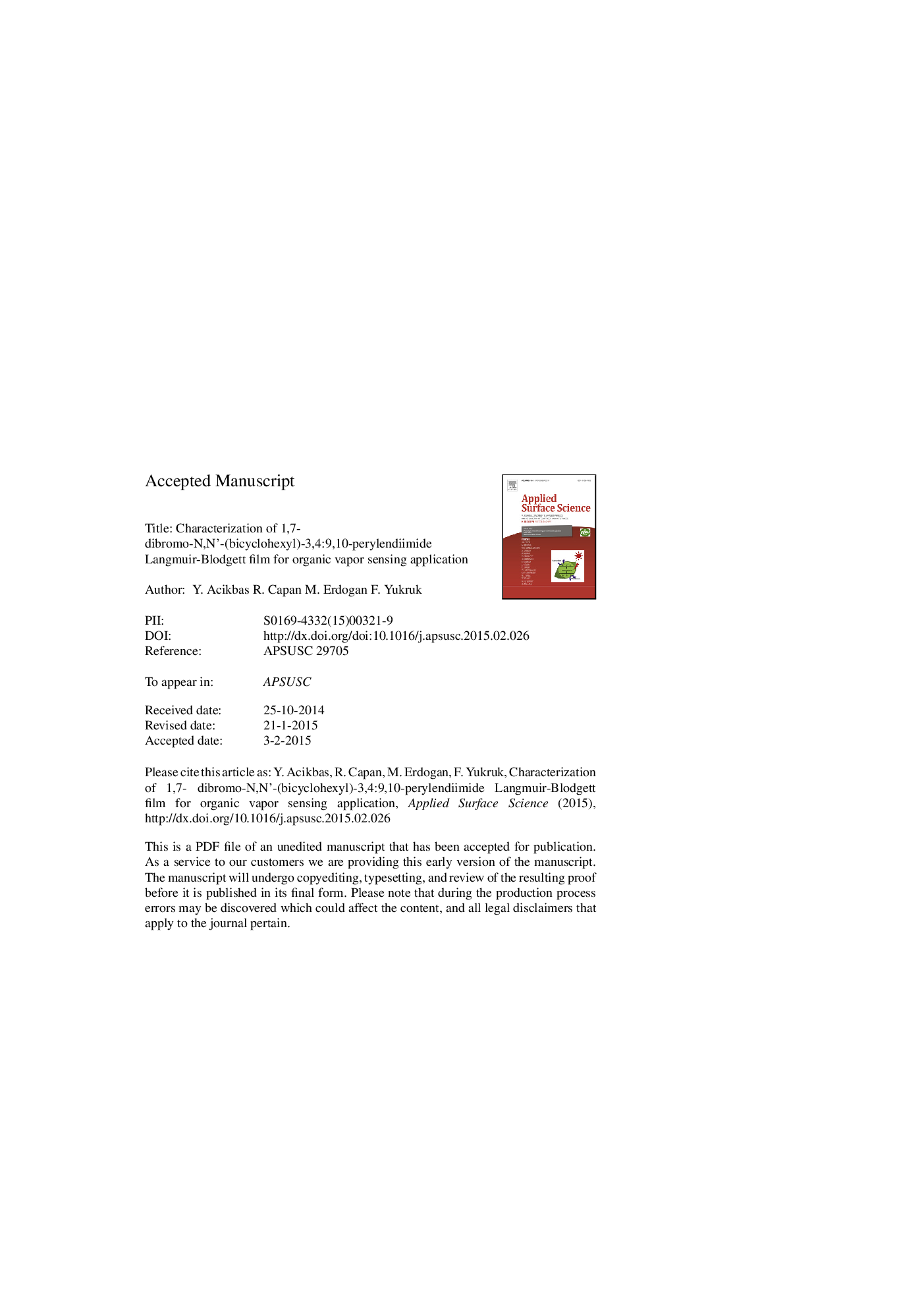| Article ID | Journal | Published Year | Pages | File Type |
|---|---|---|---|---|
| 5349182 | Applied Surface Science | 2015 | 30 Pages |
Abstract
1,7-Dibromo-N,Nâ²-(bicyclohexyl)-3,4:9,10-perylendiimide material (FY3) was used as a sensor element in this work. Different number of LB thin film layer was deposited onto a gold-coated glass substrate to produce a thin film sensor element. Fabrication processes were monitored by surface plasmon resonance (SPR) technique. The experimental SPR data were fitted using the Winspall software to evaluate the film thickness and refractive index of this material. Values of the thickness and refractive index of LB films were determined as 0.54 ± 0.01 nm for the thickness per monolayer, and 0.46 ± 0.08 for the refractive index. LB thin film sensor element was exposed to chloroform, benzene, toluene and ethyl alcohol vapors. In-situ SPR measurements showed that the response of the FY3 LB film for saturated chloroform vapor is much larger than the other vapors with 4 s recovery times and 5 s response time. The photodetector response change, ÎIrf was monitored when FY3 LB film was exposed to these organic vapors and the response of the FY3 LB film to chloroform was also the largest among organic vapors with the ÎIrf value of 0.11 au. It can be proposed that this sensing element deposited onto gold-coated glass substrates has a good sensitivity and selectivity for saturated chloroform vapor.
Related Topics
Physical Sciences and Engineering
Chemistry
Physical and Theoretical Chemistry
Authors
Y. Acikbas, R. Capan, M. Erdogan, F. Yukruk,
